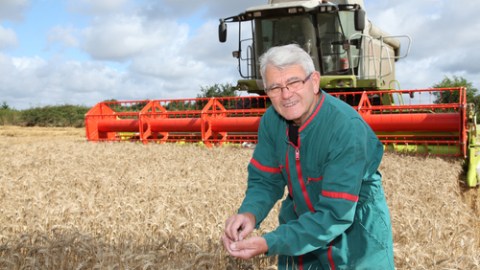Aging Farmers & the Stewardship of America’s Agriculture Industry

Most of us are fortunate enough to never have to ask where our food comes from. When we are young it just seems to materialize. A trip to the grocery store and a little of (typically) mom’s magic a meal appears. Despite our daily experience and the distance most of us have from its origins – meat does not come wrapped, cereal does not come from boxes nor do vegetables, milk and eggs simply appear on the shelves of Walmart and Wegmans. It is America’s farmers that produce what fills our plates and stomachs each day. But more than providing the nation’s food, farming is a strategic economic asset of the United States and it’s stewardship is in transition.
Disruptive demographics affect everything – and the agriculture business is no different. America’s farmers are aging. There have always been ‘old’ farmers but the difference today is that there appear to be fewer people who want to fill their boots when they ‘retire’.
Consider the following demographic reality. According to the 2007 Census of Agriculture, the average American farmer, that is the principle operator of their own farm, was 57.1 years old – nearly 17 years older than the average American worker.
The velocity of the graying of America’s agriculture industry is unparalleled – nor does it appear to be a short-term population blip. The average farmer age increased 10 years from 47.6 years old to 57.1 in a short four years (2003-2007). Nearly 30% of all farms are operated by people 65 years old and older. African-American farm operators are older as a group averaging 60.3 years old. And female operators are close to an average 59 years old. Another look at the 2007 Agriculture Census shows that the only age cohort with a significant increase in numbers are farmers 70 years old and older. Moreover, since 1982 the percentage of new farmers, defined as those who have operated their land for less than 10 years, has continued to decline.
Immigration could provide new younger operators. So far that is not occurring or is not affecting the averages. The average age of Hispanic operators is 55 years old and 25% of Hispanic operators are 65+. And, while the number of Asian farm operators did grow 40% between 2002 and 2007 their average age is just over 56 years old.
Farmers are twice as likely than other professions to work past 65 years old. Economic necessity as well as identity makes continued work critical to maintaining more than just a livelihood – but a family legacy.
Rewarding as it may be farming is hard work. Despite new technologies automating more and more of the work, there remain long hours and heavy physical labor that places high demands on an aging body. Farming can be dangerous as well. On average, across all industries, nearly 4 workers for every 100,000 die from an accident on-the-job – a shadow of the 28.4 farmers per 100,000 that die from work-related accidents on the farm, e.g., tractor rollovers.
Where have all the farmers gone? Most farms have been family affairs for generations. Baby boomer farmers, like most everyone else in the baby boomer cohort, had fewer children than their parents. It will be at least a decade before the coming wave of millenials potentially fill the void left by retiring baby boomers. And, many of those children will be lured to urban centers by the promise of economic opportunity. Farming parents are very likely to have encouraged their children to go to college and to seek ‘new and different’ – leaving most of the nation’s highly agricultural states with the highest concentrations of older adults.
The new demographics of an aging agriculture industry presents many questions as well as calls to action for both business and government – here are just a few:





